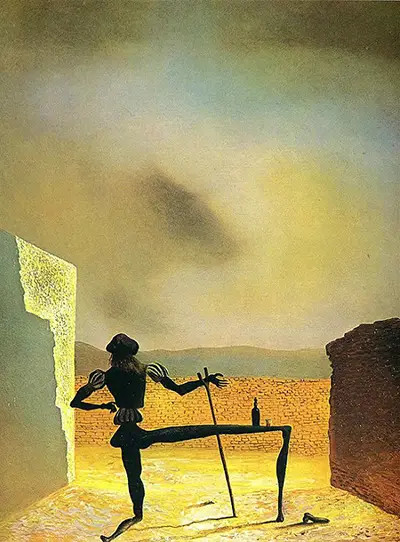In this instance, Dali references what is considered to be a self portrait by Vermeer, but one which has the artist with his back to the viewer. The figure bears a striking resemblance, but in Dali's vision it is a bizarre centaur like vision of half man, half table.
The outstretched leg of Vermeer functions as a table top upon which rests a bottle and a small glass.
Vermeer's original Art of Painting is said to be an allegory about painting itself. The main theme is the process of producing art, and the main focus is the artist.
In Dali's version, titled Ghost of Vermeer of Delft which can be used as a Table, the artist is not in the process of production, but is at rest. Instead of a female model as his focus the artist is confronted by a brick wall and mountains in the distance.
This has been seen as a statement regarding inspiration, as the surroundings are based on the views at Dali's home in Port Lligat. Is it saying that when faced with no inspiration around you, the artist turns to art itself for inspiration?
Dali took inspiration from the Art of Painting on numerous occasions, referencing it four other times in work done during the same period.
This painting was created in 1934, and during this period Dali had arguments with the Surrealists and Andre Breton after exhibiting The Enigma of William Tell, a painting which bore similarities to this one in it's use of a public figure, extended body parts (a buttock in this instance) and use of the maulstick.
For a small painting there's plenty to discover in Dali's Ghost of Vermeer of Delft which can be used as a table.

